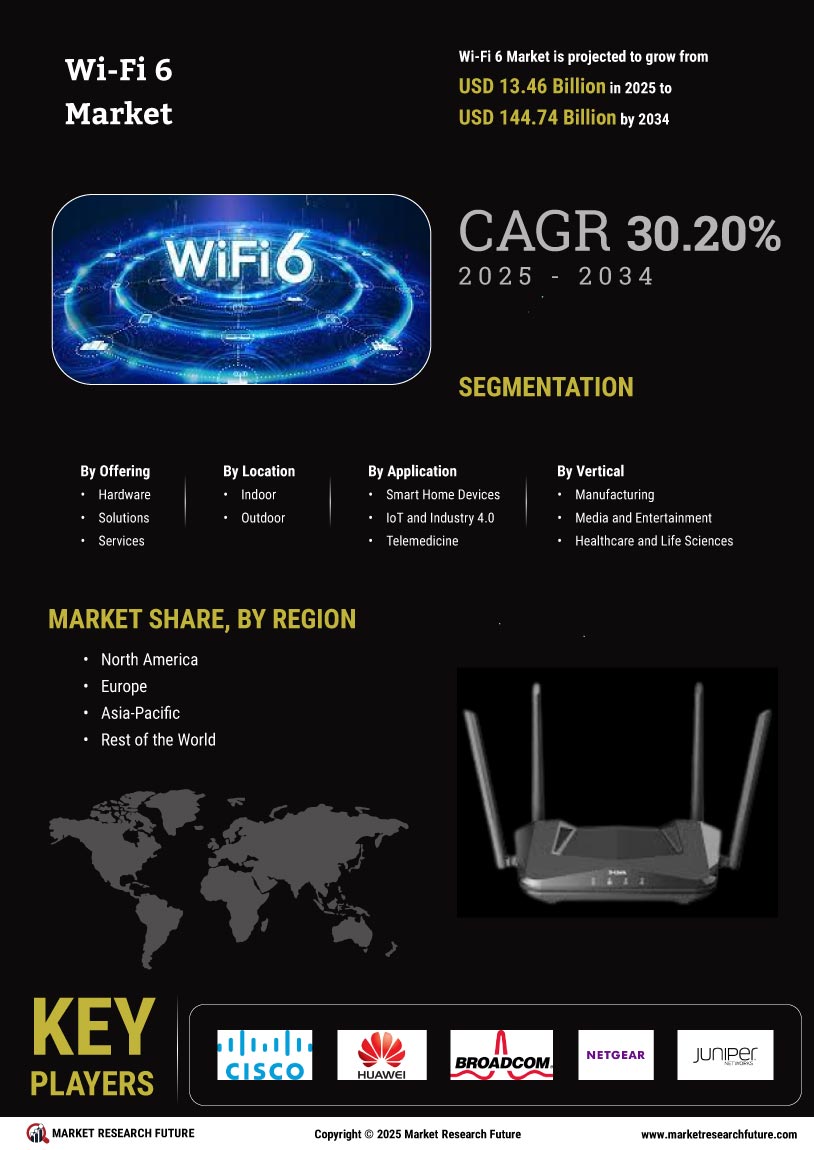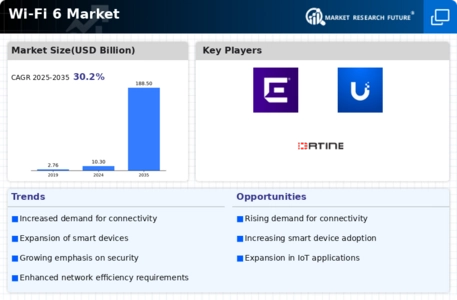Wi Fi 6 Market Summary
As per Market Research Future Analysis, the Wi-Fi 6 market is set to experience significant growth, driven by the demand for higher data speeds and increased device connectivity. The market is projected to expand from USD 13.46 Billion in 2025 to USD 188.47 Billion by 2035, reflecting a robust CAGR of 30.20% during the forecast period. The market was valued at USD 10.34 Billion in 2024, indicating a strong upward trajectory fueled by the proliferation of smart devices and IoT applications.
Key Market Trends & Highlights
Key trends driving the Wi-Fi 6 market include:
- Projected market growth from USD 13.46 Billion in 2025 to USD 144.74 Billion by 2034.
- Wi-Fi 6 technology supports data rates up to 9.6 Gbps, enhancing performance for applications like VR and 4K streaming.
- The indoor segment is expanding due to increased demand for reliable connectivity in homes and workplaces.
- Healthcare and Life Sciences is a rapidly growing vertical, driven by the need for secure wireless connectivity.
Market Size & Forecast
| 2024 Market Size | USD 10.34 Billion |
| 2035 Market Size | USD 188.47 Billion |
Major Players
Key players include Cisco Systems Inc., Qualcomm Technologies Inc., Broadcom Inc., Intel Corporation, Huawei Technologies, NETGEAR Inc., Juniper Networks Inc., Extreme Networks Inc., Ubiquiti Inc., and Fortinet Inc.















Leave a Comment